india unesco heritage sites
The United Nations Educational, Scientific and Cultural Organisation (UNESCO) was established in 04 November 1946 and was recognised as a Specialized Agency of World Organisations in 14 December 1946. As per the UNESCO World Heritage Convention held in 1972, according to this convention, the World Heritage Sites has been categorized into two parts, one is Cultural & Heritage and another is Natural. There are total 32 World Heritage Sites in India which are recognised by UNESCO.
Agra Fort, Agra

One of the most popular sightseeing in Agra, the Agra fort was constructed by Akbar between 1565 -1573. This fort is built alongside the banks of River Yamuna and stretches for a length of almost 2.5 km. The fort is made using splendid pieces of red sandstone and white marble and the inner area inlaid with various semi-precious stones. It was listed as a world heritage site by UNESCO in 1983
Ajanta Caves, Maharashtra
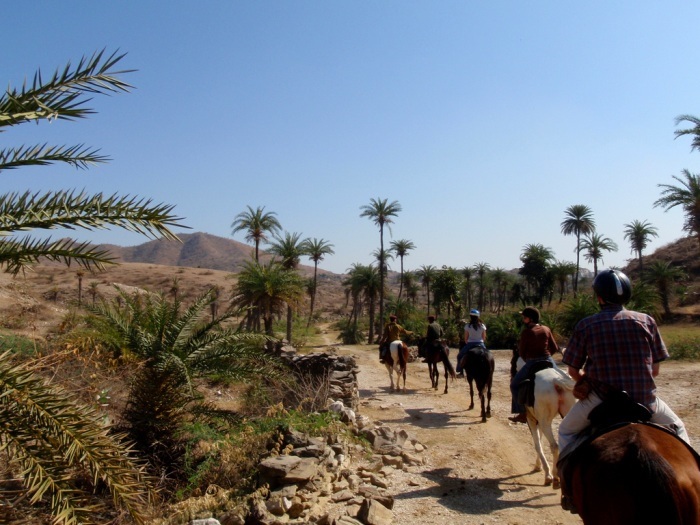
It is an UNESCO World Heritage Site which was listed in 1983. It is known for its rock cut caves and alluring paintings. This splendid cave is dated back to 2nd century BC. This heritage place consist of the finest masterpieces of paintings, sculpture and 31 rock cut Buddhist cave monuments.
Elephanta Caves, Maharashtra
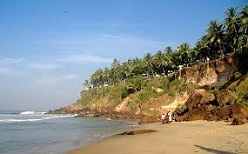
Elephanta Caves is one of the most popular attraction of Maharastra, located about 10 kilometres from Mumbai and easily accessible by ferry. In 1987, it was listed as a world heritage site by UNESCO. This beautiful cave is located at Elephanta Island which was also known as Gharapuri, which was explored by Portuguese in 16th century. It believed that this cave temple was established between 450 AD and 750 AD
Ellora Caves, Maharashtra
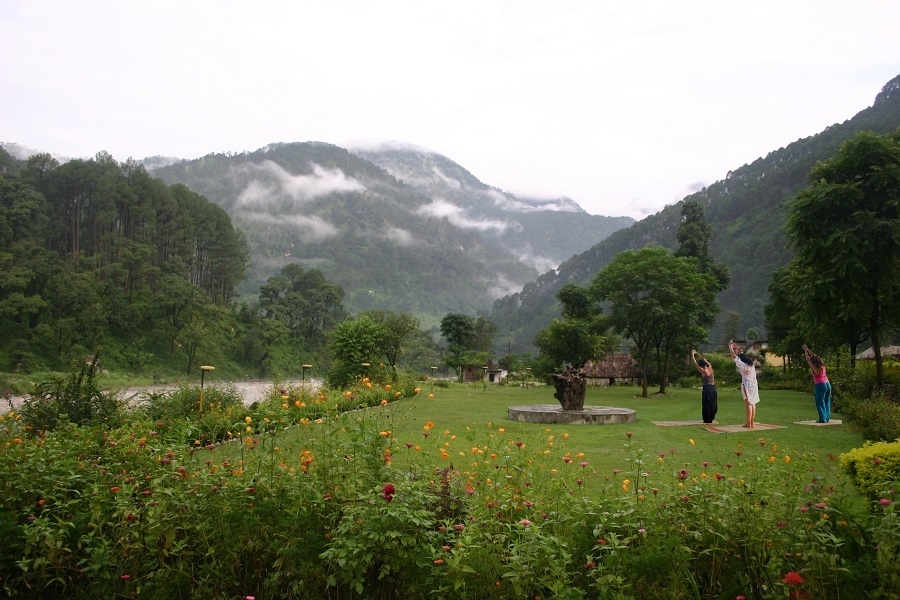
Ellora Caves is a World Heritage Site listed by UNESCO in 1983. The cave excavated out of Hills, Rock-cut Architecture. Ellora Caves renowned for its beautiful carvings, Buddhist, Jain and Hindu Temples and Maths of 5th and 10th century.The cave temples and monasteries at Ellora truly reflects the religious harmony which prevailed during the 5th and 11th century AD.
Amer Fort and Palace, Rajasthan

Located at 11 kilometre north of the Jaipur city centre Amber Fort Palace is one of the most popular attraction in Jaipur. For 700 years (1037-1727) Amer was the capital of the Kachhwaha Rajputs. The fort is located forested hill promontory that juts into Maota Lake near the town of Amer. The red Located at 11 kilometre north of the Jaipur city centre Amber Fort Palace is one of the most popular attraction in Jaipur. For 700 years (1037-1727) Amer was the capital of the Kachhwaha Rajput’s. The fort is located forested hill promontory that juts into Maota Lake near the town of Amer. The red sandstone and marble stone construction reflect a blend of Hindu-Muslim architecture. It is a UNESCO World Heritage Site under the group Hill Forts of Rajasthan.sandstone and marble stone construction reflect a blend of Hindu-Muslim architecture. It is a UNESCO World Heritage Site under the group Hill Forts of Rajasthan.
Manas Wildlife Sanctuary

Manas national Park is one of the renowned Project Tiger Reserve, an Elephant Reserve and a Biosphere Reserve in Assam and UNESCO World Heritage Site. The sanctuary is home to a wide range of animals including tiger, elephants, golden langur and pygmy hogs. The sanctuary is also popular for its population of the Wild water buffalo. It is named after Manas River, a major tributary of Brahmaputra River, which passes through the heart of t Manas national Park is one of the renowned Project Tiger Reserve, an Elephant Reserve and a Biosphere Reserve in Assam and UNESCO World Heritage Site. The sanctuary is home to a wide range of animals including tiger, elephants, golden langur and pygmy hogs. The sanctuary is also popular for its population of the Wild water buffalo. It is named after Manas River, a major tributary of Brahmaputra River, which passes through the heart of the national park.he national park.
Churches and Convents of Goa

Churches and Convents, located at old Goa are declared as UNESCO World Heritage site in 1986.
The old Goa was established in 15th Century by Bijapur Sultanate, later it was annexed by the Portuguese empire, they ruled there from 1510 as the administrative seat of Portuguese India. Churches and Convents of Goa were influential in spreading forms of Manueline, Mannerist and Baroque art. Most of the churches and cathedrals built during 16th to 17th century AD at Old Goa such as Lgreja de Nossa Senhora do Rosário, Sé Catedral of Goa, Basilica of Bom Jesus, and Church of St. Francis of Assisi, Chapel of Santa Catarina, Ruins of the Church of St. Augustine and Church of Divine Providence (São Caetano or St Cajetan).
![]()
Fatehpur Sikri, Agra
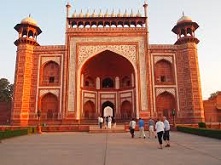
A World Heritage Site listed by UNESCO in 1986, Fatehpur Sikri was built during the second half of 16th century by Mughal emperor in an homage to famous Sufi Saint Salim Chishti. Fatehpur Sikri is located at 37 kilometres away from Agra. Fatehpur Sikri is known as the city of victory. Akbar liberal religious views and interest in art, architecture and literature resulted in a charismatic blend of Islamic and Hindu elements in the architecture of the buildings at Fatehpur Sikri. The complex of monuments contains Jama Masjid, which is one of the largest mosque in India.
Chittaorgarh Fort, Rajasthan
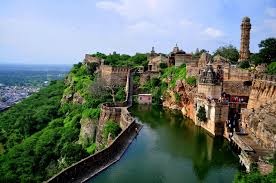
The fort is situated on the foothill of Aravalli hill range near on the bank of the Berach River. Chittorgarh fort is spread over 700 acre, which was built by Mauryans between the 5th and 8th century, hence it named after the Mauryan ruler, Chitrangada Mori.
The fort as the capital of Mewar for about 834 years. It was founded by Bappa Rawal who was the founder ruler in the hierarchy of the Sisodia rulers of Mewar in 734. It is also said that the fort was presented to Bappa Rawal as part of Solanki princess dowry in the 8th century. It is full of Hindu, Muslim and Jain constructions. It was declared a UNESCO World Heritage Site under the group Hill Forts of Rajasthan.
Kumbhalgarh Fort, Rajasthan
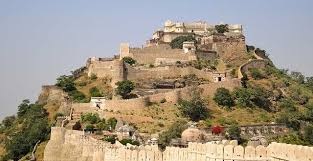
A UNESCO World Heritage Site under the group Hill Forts of Rajasthan, which was constructed by Rana Kumbha between AD 1443 and 1458 under the supervision of famous architect Mandan. Kumbhalgarh Fort is located at the foothill of Aravali. Its walls extended for 36 kilometres and it was conquered only once. The wall of the fort is the second largest wall in the world, after the Great Wall of China which is also known as Great Wall of India. Its tower at a height of 3,600 foot, which gives the spectacular view of the city.
Ranthambhore Fort, Rajasthan

Ranthambhore Fort stands tall at the centre of the forest, which is located at the meeting point of Vindhya and Aravali ranges. It lies within the Ranthambhore National Park, near the town of Sawai Madhopur. This splendid architecture was built in 944 CE. Earlier it was the Rajputana fort which was captured by Allaudin Khalji’s in 1301. It was declared as a UNESCO World Heritage Site.
Group of Monuments at Hampi, Karnataka
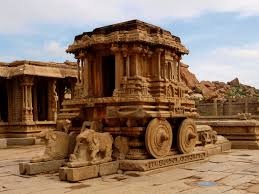
Located within the ruins of the Vijayanagara Empire, Hampi is a UNESCO world heritage site, which was listed in 1986. It was the former capital of the Vijayanagara Empire. It is the collection of heritage sites, which is the best example of fine Dravidian Architecture. The monuments include Sacred Centre- Hampi Bazaar, Courtesan’s street, Veerupaksha Temple, Achyut Raya’a temple, Hazara Ram Temple, Sasivekalu Ganesha. Royal Center, Stone doors, Mahanavami Dibba, Zenana Enclosures, Granaries’, Palace of Veera Harihara.
Humayun’s Tomb, New Delhi
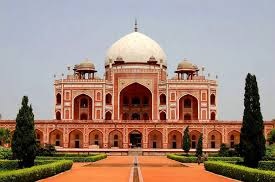
Declared as UNESCO world Heritage site since 1993.Humayun Tomb is located at Lodhi road near the crossing of Mathura road, it was constructed in 1565 by his first wife Bega Begam, after fine year of his death. It is also designed by Mirak Mirza Ghiyas, a Persian architect. Humayun’s Tomb is the first of the famous garden tomb of the Mughals.
Kaziranga National Park

Kaziranga National Park located at the edge of the Eastern Himalayan biodiversity hotspot and lies in the flood plains of Brahmaputra. In 1985, this sanctuary was declared as a UNESCO World Heritage site is famed for being the last undisturbed habitat of great one-horned rhinoceroses. Being located at perfect geographical location the chances of the visibility of diversified species are very high. Kaziranga is a vast expanse of tall elephant grass, marshland, and dense tropical moist broadleaf forests which is rich in vast flora and fauna. The sanctuary is spread over 480 square kilometre, it stretches east to west with the Brahmaputra as its northern boundary.
Rani Ki Vav, Patan, Gujarat
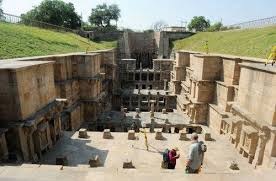
It is popular for its Stepped Corridors, Vishnu Sculptures and Stone Carvings in the Well. In 2014, it was added to the list of UNESCO World Heritage Site. It was built in 1050 AD, in the memory of Bhimdev, Solanki dynasty of Anahilwada Patan by his widowed queen Udayamati. Rani Ki Vav is located on the banks of the Sarasvati River. This beautiful east-facing step well measures about 64m long, 20m wide & 27m deep, it’s an explicit example of fine Indian architecture.
Group of Monuments at Mahabalipuram
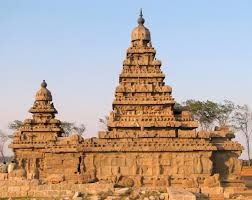
Located on the Coromandel Coast of the Bay of Bengal, in Kanchipuram district in Tamil Nadu, Mahabalipuram Group of Monuments is one of the most popular heritage structure of South India. It was constructed during the 7th and 8th centuries by Pallava kings. The most renowned structures are its rathas as the temples is constructed in the form of chariots, its giant open-air reliefs such as the famous Descent of the Ganges, Panchapandava Cave Temple; structural temples including the Shore Temple and the Olakkannesvara Temple etc. The group of Monuments at Mahabalipuram is a World Heritage site by UNESCO, which was listed in 1984.
Khajuraho Group of Monuments, Madhya Pradesh

Khajuraho Group of Monuments are the best example of the glorious past of India. It is World Heritage Site by UNESCO, which was listed in 1986, which is most visited place in India after the Taj Mahal. Erotic the world heritage site of Khajuraho temples divided into Eastern and Western group of temples that will include Laxmi & Varaha temples Kandariya Mahadev, Devi Jagdamba temples and more. These temples, built between 950 and 1050 AD at the time of Chandela rulers have structures that glorify erotica.
Group of Monuments, Pattadakal
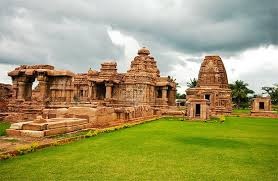
A UNESCO World Heritage site, a village and one of the most popular tourist centre of Karnataka. This splendid monuments are located in Bagalkot district and it is 22 km from Badami and about 10 km from Aihole. It is the group of nine Hindu temples along with a Jain sanctuary. Another glorious architecture of this monument is stands out from the group of monuments, it is known as the Temple of Virupaksha, which was built by Queen Lokamahadevi to commemorate her husband victory over the kings from the South. The Pattadakal Group of Monuments was constructed under the Chalukya dynasty between 7th and 8th centuries.
Jantar Mantar Observatory, Jaipur

Jantar Mantar Observatory is one of the most popular attraction of Jaipur. This monument was built by Sawai Jai Singh. It is one of the 5 Jantar Mantars built by him throughout India. The building was used for astronomical calculations. The monument was listed as UNESCO World Heritage Site in 2010.
Qutub Minar, New Delhi
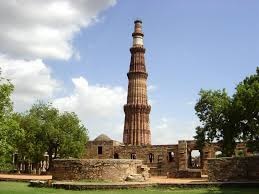
It is the one of the most impotent tourist attraction of the Delhi. Qutub Minar is 73 meters high and is situated in Qutub complex at Mehrauli in South Delhi, the construction started by Qutub-ud-din Aibak of Slave Dynasty, by using marble and sandstones. Built in 1193 but finished by Iitutmish, his son-in-low in 1368. Its fifth and the last storey was built by Firoz Shah Tughlaq. The site has been declared as a UNESCO World Heritage Site in 1993. The area around the Qutub Minar is known as the Qutub complex, and holds various other ancient and medieval structures.
Taj Mahal, Agra

One of the most renowned architecture of India, which is described as the most extortionate monument ever built for love. It was constructed by Mughal Emperor Shah Jahan, he dedicated this splendid monument to his beautiful wife Arjumand Bano Begum popularly known as Mumtaz Mahal. It is the final resting place of the queen, splendidly created for her remembrance. The beauty of Taj Mahal not only brings joys in viewer’s eyes but also is a feast to senses. Taj Mahal was declared as UNESCO world heritage site in the year 1983. Around 3 million people visit this site every year.
Mahabodhi Temple at Bodh Gaya
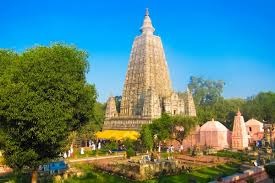
Mahabodhi Temple is one of the holiest place for Buddhist, which is one of the four holy sites related to the life of the Lord Buddha, built by Emperor Ashoka in around 260 BC. The present temple dates from the 5th or 6th centuries. It is one of the oldest Buddhist temples built entirely in brick, still standing in India, from the late Gupta period. In 2002, Mahabodhi Temple was declared as a World Heritage site by UNESCO.
Sundarbans National Park
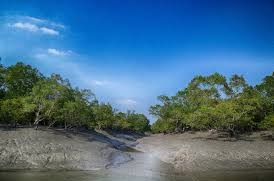
Sundarbans Tiger Reserve, Biosphere Reserve and a National Park in West Bengal which is located on Ganges Delta, and adjacent to the Sundarban Reserve Forest in Bangladesh. It is one of the largest reserves and home of the Bengal tiger which is covered by dense mangrove forests. It is also the home to reptile, invertebrate species such as salt-water crocodile and the verities of birds. In 1973 it was declared as Sundarban Tiger Reserve and it was declared a National Park in 1984. It is also listed as a UNESCO World Heritage site in 1987.
Great Living Chola Temples, Tamil Nadu
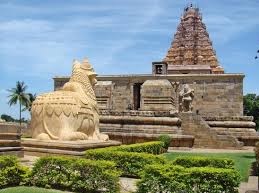
Built during 11th and 12th century, which is known as Great Living Chola Temples and declared as UNESCO as a World Heritage Site in 1987. It is one of the most popular heritage of India, built during the Chola dynasty, it includes 3 temples which are Brihadisvara Temple at Thanjavur, the Temple of Gangaikonda Cholapuram and the Airavatesvara Temple at Darasuram.
Western Ghats
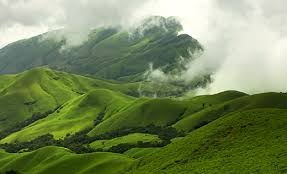
One of the eight hottest bio-diversity hotspots in the world Western Ghats are renowned for its rich and unique assemblage of flora and fauna. It is a UNESCO World Heritage Site, listed in 2012. Western Ghats also known as Sahyadri which spread over about 1600 kilometres in western India. Stretching north to south along the western edge of the Deccan plateau starts from the border of Gujarat and ends at Kanyakumari. A total of thirty nine properties are declared as world heritage site including ten in Karnataka, twenty in Kerala, four in Maharashtra and five in Tamil Nadu.
Red Fort, New Delhi
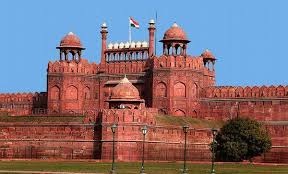
Red fort one of the most popular attraction of India, located in Delhi. In 2007 is was declared as World Heritage site by UNESCO. This beautiful fort was built by Mughal emperor Shah Jahan from 1639 to 1648, when Shah Jahan was decided to shift from Agra to Delhi. The entire fort was made by huge blocks red sandstone. This fort survived the large scale demolition done by the British Empire in India due to its importance. Every year here on Independence Day (15th August), Prime Minister of India, hoisted the Tricolour.
Konark Sun Temple
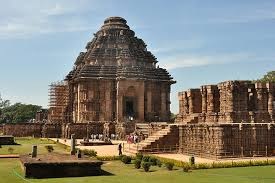
Konark Sun Temple is one of the most popular heritage architecture which reflects the traditional style of Kalinga Architecture. It was built in 1250 AD by king Narasimhadeva I of Eastern Ganga Dynasty. It is in the shape of an extensive chariot with carved stone wheel, pillars and walls. It is said to be the son of Lord Krishna, Samba, got the Konark Sun Temple built to honour Surya the Sun God, as the God had cured his leprosy. It is also added to the UNSECO World Heritage List in 1984.
Buddhist Monuments, Sanchi

One of the most popular Buddhist monuments of Sanchi is located about 40 km from Bhopal in Madhya Pradesh. The group of Buddhist monuments at Sanchi comprises monolithic pillars, palaces, temples and monasteries. It is the one of the most ancient Buddhist sanctuary in existence. It was a major Buddhist centre in India until the 12th century A.D. The Great Stupa at Sanchi is the oldest stone structure in India, which was built by emperor Ashoka the Great in the 3rd century BC. Buddhist Monuments at Sanchi was listed as World Heritage Site by UNESCO in 1989.
Rock Shelters of Bhimbetka
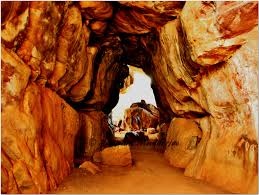
The Rock Shelters of Bhimbetka are located in the foothills of the Vindhyan Mountains in Madhya Pradesh. 600 caves but only 12 are open for public. It is popular for its pre-historic paintings and Bhimbetka Rock Shelters. Bhimbetka caves depicts the early stage traces of human life in India. According to the Archaeologists that these caves might have been used for shelter over 1000 years ago. It believed that some of the shelters were inhabited by Homo erectus more than 100,000 years ago apart from this few Stone Age rock paintings found here are approximately 30,000 years old. Here we found the oldest evidence of dance. In 2003, it was declared as a World Heritage Site by UNESCO.
Great Himalayan National Park Conservation Area

Situated on the foothill of western part of the Himalayan Mountains, the Great Himalayan National Park is one of the most stunning place located in Kullu region in Himachal Pradesh. It is spread over an area of 1,171 and was established in 1984. It is the home of 181 birds, approximately 31 mammals, 3 reptiles, 9 amphibians, 11 annelids etc. The national park is a part of the Himalaya biodiversity hotspot and includes 25 forest types along with a rich assemblage of fauna species, several of which are threatened. Great Himalayan National Park Conservation Area was declared as UNESCO world Heritage site.
Chhatrapati Shivaji Terminus (formerly Victoria Terminus)

An excellent example of Victorian Gothic Revival architecture merged with Indian traditional architecture. This beautiful terminal is located in Mumbai. Earlier it was known as Victoria Terminus Station which was opened in 1887, on the Silver Jubilee of Empress Victoria. It was declared as UNESCO World Heritage site in 2004.
Jaisalmer Fort, Rajasthan

A UNESCO World Heritage Site, Jaisalmer Fort which is also known as Golden Fort of Rajasthan. It is the one of the largest fortifications in the world. Jaisalmer fort was constructed by Rawal Jaisal, the Rajput ruler in 1156 AD. The fort located on Trikuta Hill, it amidst the sandy expanse of the great Thar Desert and has been the scene of many battles. The major attractions of this fort is Raj Mahal (Royal palace), Laxminath temple, 4 massive gateways, Merchant Havelis.
Keoladeo National Park
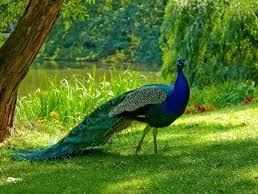
Located in Bharatpur, Keoladeo Ghana National Park is one of the most popular bird sanctuary in Rajasthan. It is also known as Bharatpur Bird Sanctuary, which is a significant wintering region for migratory birds. The Bird sanctuary was established in 13 March 1956 under the name of Bharatpur Bird Sanctuary. Later on 10 March 1982, the site was assigned as a national park and was named Keoladeo Ghana National Park. In 1985 that this national park was recognized as a World Heritage Site by UNESCO. The national park currently attribute 5 species of amphibians, 7 species of turtles and 50 species of fishes, it is most famous for its avian fauna of 375 species of birds, including Pelicans, Cranes, Herons, Spoonbills and others.
Nanda Devi and Valley of Flowers National Parks

Located in West Himalaya, in the state of Uttarakhand, Nanda Devi and Valley of Flowers National Parks known for its meadows of endemic alpine flowers and splendid natural beauty. The Nanda Devi National Park, established in 1982. It is a national park located around the peak of Nanda Devi along with the adjoining Valley of Flowers National Park. Valley of Flowers National Park is also a home of rare and endangered species including the snow leopard, Asiatic black bear, musk deer, brown bear, red fox etc. Nanda Devi National Park is a home of Himalayan musk deer, mainland serow and Himalayan tahr. The beautiful and gentle landscape of the Valley of Flowers National Park complements the rough mountain wilderness of Nanda Devi National Park. Both National parks are a UNESCO World Heritage Site.
Mountain Railways of India
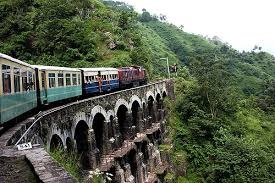
There are three mountain railways are declared as UNESCO World Heritage Site including The Darjeeling Himalayan Railway, Nilgiri Mountain Railway and The Kalka Shimla Railway.
Darjeeling Himalayan Railway runs between New Jalpaiguri to Darjeeling in West Bengal, which is 78 kilometres narrow gauge railway route. It was built between 1879 and 1881. It is also known as the Toy Train.
Kalka–Shimla Railway route is one of the most stunning railway route in India, which is surrounded by mountains and tiny hamlets, which offers the spectacular view. It is 96 kilometres long, single track working rail link built in the mid-19th century.
Located in Tamil Nadu, Nilgiri Mountain Railway is a railway is another most beautiful rail route of India, which was built in 1908 by the British. It is a 46 Km long and runs on 1000 mm gauge railway which runs from Mettupalayam to Ooty.
Champaner-Pavagadh Archaeological Park
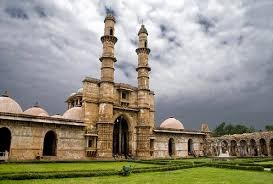
Located in Panchmahal district in Gujarat, India. Champaner-Pavagadh Archaeological Park is a group of eleven different types of buildings including temples, mosques, granaries, tombs, wells, walls, and terraces. It is a UNESCO world heritage site, located foot of Pavagadh Hill. The Archaeological Park is the blend of Hindu and Muslim architecture from the 8th to the 14th centuries. Some of the monuments are Jami Masjid, Kevda Masjid and Cenotaph, Nagina Masjid and Cenotaph, Lila Gumbaj Ki Masjid, Sahar Ki Masjid, Bawaman Mosque, Lakulisa temple, Jain temples, Kalika Mata Temple, Tombs and mausoleums, Fort of Pavagadh and the ruined Hindu and Jain Temples on the top of the Pavagadh Hill, Three cells and Walls.